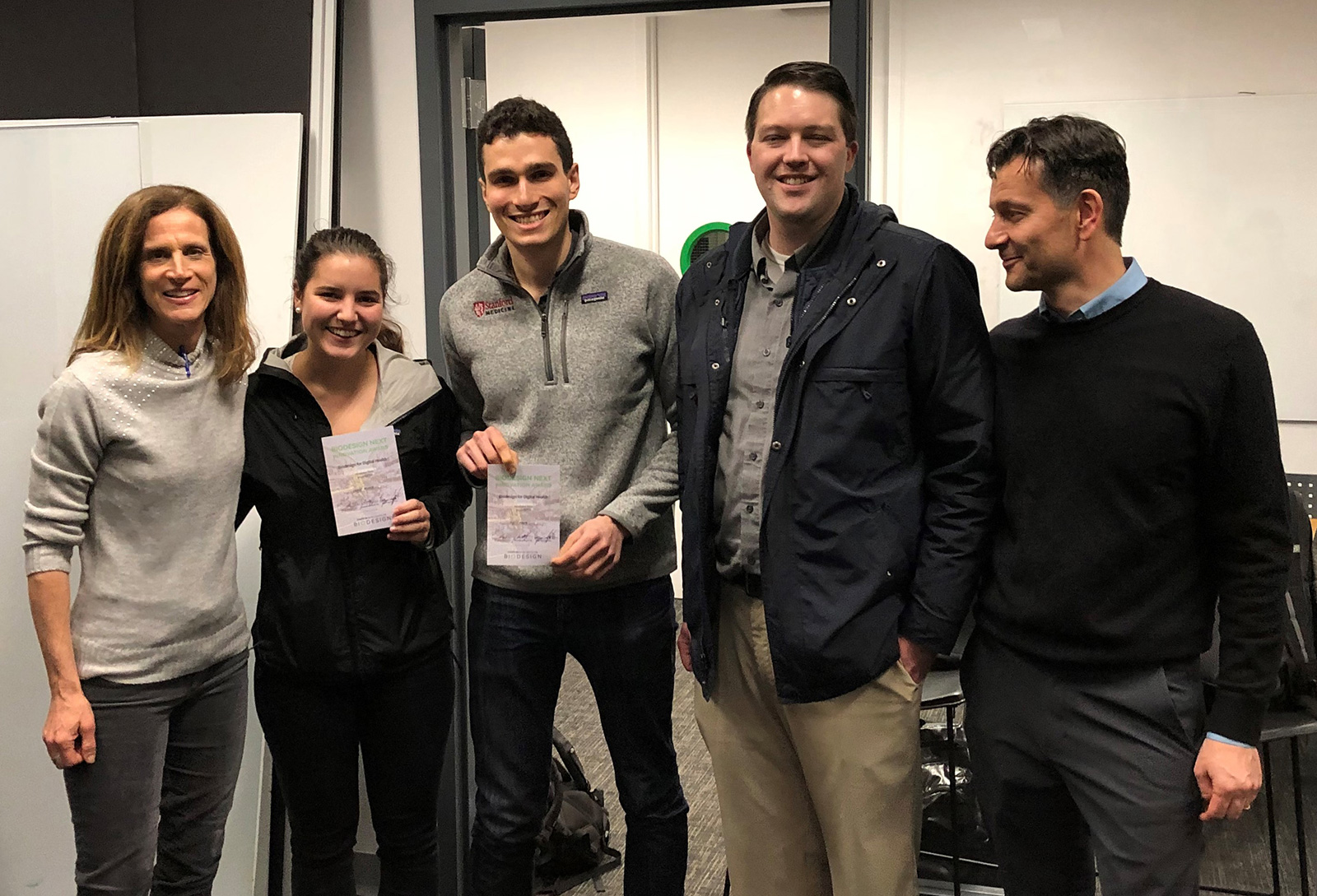Health Technology Showcase
Five Questions and an Elevator Pitch:
Team Baby+
 In this short video, members of the Baby+ team explain the need they set out to address and how their solution works.
In this short video, members of the Baby+ team explain the need they set out to address and how their solution works.
1. What’s the need your project seeks to address?
Mahbuba: The goal defined by our class team was to decrease hospital readmissions of preterm babies. 15% of preterm infants return to the hospital during their first year, primarily because of jaundice, feeding issues, and fevers. To better understand why this happens, our team -- which included me, Eli Cahan, Beatrice Goad, Grace Romer, and Jess Zhou -- interviewed parents and neonatologists. The parents reported feeling overwhelmed when it was time to take their babies home – often they hadn’t slept for days and were anxious about losing the support of the nurses. Because of this, they had trouble processing the care instructions and keeping track of all the documents from the hospital. Also, the neonatologists knew that the detailed care instructions they were providing at discharge weren’t always being communicated in a way the parents would remember. One of the most telling moments for us was when one of the physicians said, ‘We have to just hope they remember to watch for signs of jaundice.” So we decided to develop a solution that provides resources and information to help parents care for at-risk newborns in order to ease the transition from hospital to home, reduce parental stress, and minimize hospital readmissions.
2. How does your solution work?
Jess: Our solution is an app-based care platform. Parents use it to record daily health indicators. For example, they measure growth, use a more targeted approach to detect jaundice, and record the regularity and effectiveness of feeding. This helps parents stay more informed about how their babies are doing and catch potential problems earlier. All of the data is recorded and graphed, so it can be shared with providers and allied health care professionals to support joint decision-making. There is also a resource component that has easy to understand, clinically validated materials, as well as a community function to connect with other parents in similar circumstances. These last two features are important because, as caregivers for preemies, these parents will necessarily interact with the medical system more than other new parents and we want to help them feel more comfortable and more informed when they do so.
3. What motivated you to continue working on your project, and what activities did you undertake?
Mahbuba: What really motivated our team was the ability of our solution to help parents across the spectrum of resources and education. The experience of having a baby is universal, but the experience of having a baby who is struggling is not. Some parents are well-equipped to manage these challenges, while others struggle just to navigate the healthcare system. This project was a great opportunity to support all caretakers and work towards equity for those who struggle the most.
Jess: Inspired by those factors, we used the Biodesign NEXT mentorship and funding to begin developing wireframes of the application. We also conducted user panel surveys, solidified relationships with key stakeholders in the field, and explored partnership opportunities with other companies working in the space.
 Members of the original class team (Grace Romer and Eli Cahan, center) celebrate the initial NEXT award with the Biodesign for Digital Health teaching team.
Members of the original class team (Grace Romer and Eli Cahan, center) celebrate the initial NEXT award with the Biodesign for Digital Health teaching team.
4. What’s one of the most important things you learned from advancing your project beyond class?
Mahbuba: As someone who’s studying medicine, I personally focused first on the potential health impact of this idea. How does this improve health? Who does it help? How does it help them? These are important questions, but I learned it’s equally important to focus on the business side of innovation, from market research and competitive analysis to intellectual property and choosing the right business model. The Biodesign training really brought that home for me because without thoroughly evaluating all of these aspects, it’s hard to make your idea financially sustainable so that it reaches the patients you’re trying to serve.
5. What advice do you have for other students who want to become health technology innovators?
Mahbuba: Just remember that anyone can be an innovator, no matter their socioeconomic or demographic background. I was born in Bangladesh, and here I am, working on a meaningful project that could benefit a lot of people.
Original team members: Eli Cahan, Beatrice Goad, Grace Romer, Mahbuba Tusty, Anqi (Jess) Zhou
Course: Biodesign for Digital Health
Biodesign NEXT Funding: Awarded for winter and spring quarters 2020
